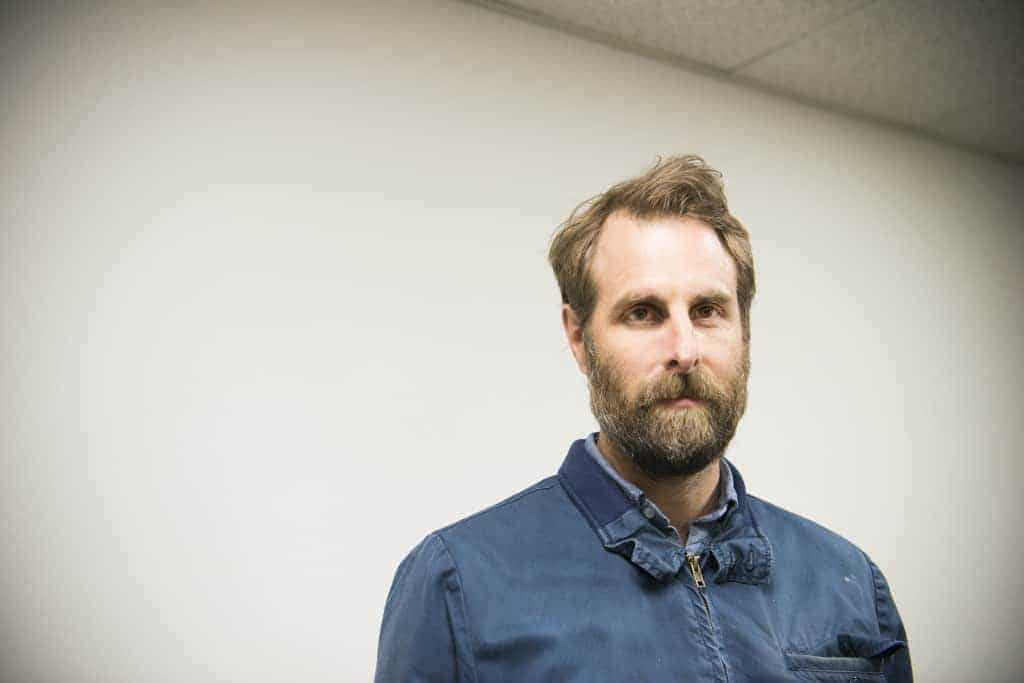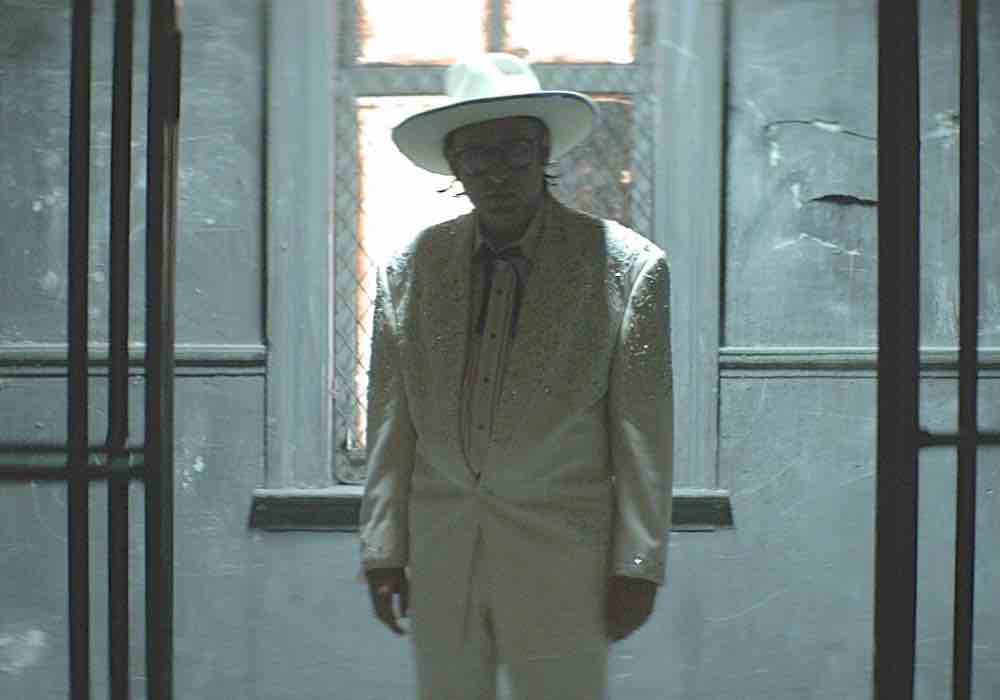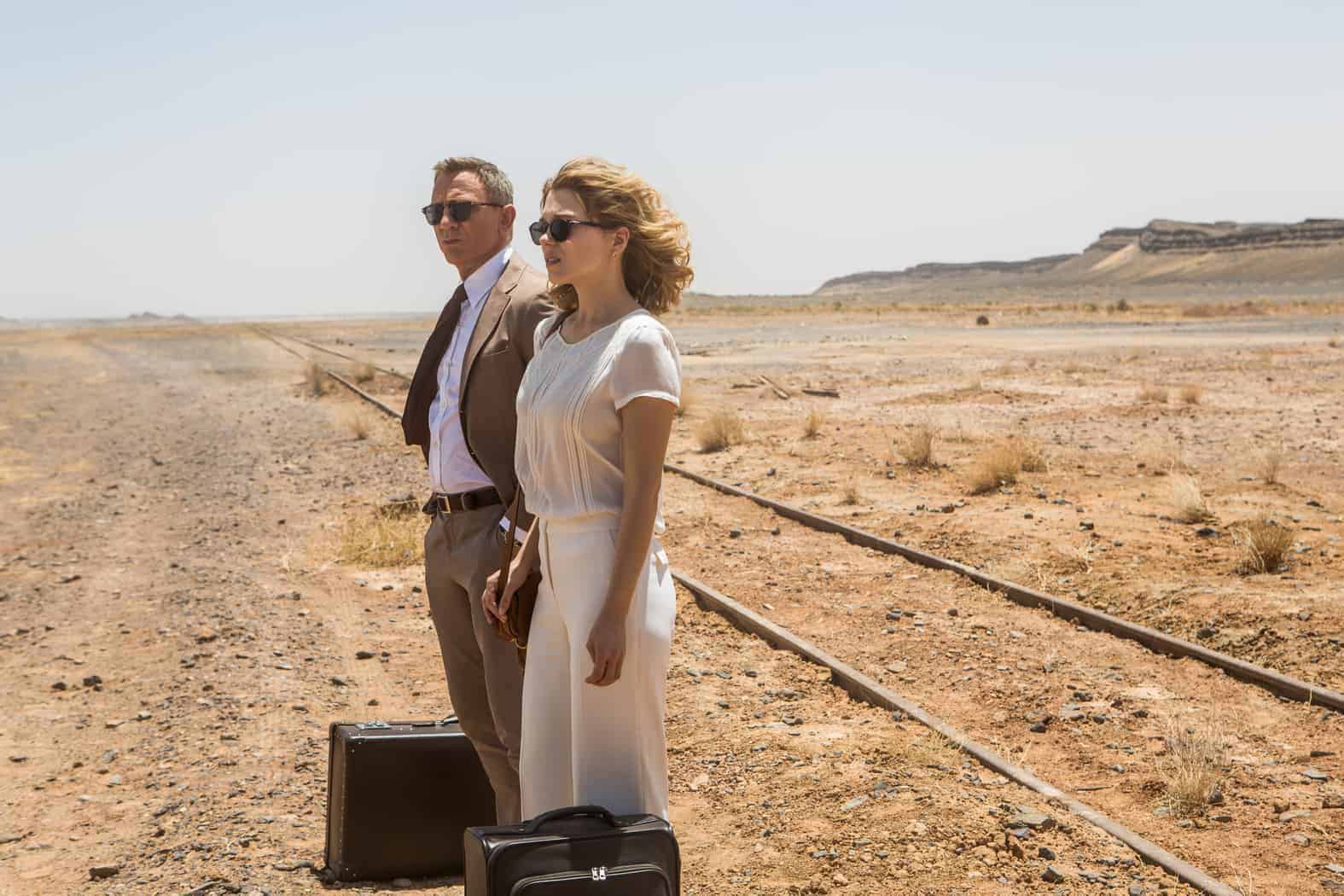Writer-director Rick Alverson discusses his confronting new film Entertainment, in which he intended to “upend expectation of what a movie should be and what behaviour should be.”

Rick Alverson describes his most recent film, Entertainment, and his previous film, The Comedy, as horror films: “They’re sort of descents into a kind of hell of our own making”. But they’re also black comedies. Shot with a formal discipline reminiscent of Roy Andersson (with whom he wasn’t actually familiar), in muted colours, Alverson favours highly composed, still shots, allowing his scenes to play out just past the point of comfort.
Entertainment follows stand-up comedian (Gregg Turkington) on tour in the Western US desert. The Comedian’s life is an endless series of rituals: performing at night, touring the local sites by day, and making sad phone calls to his idealized daughter at night whom we never see. Alverson elaborated, “I was interested in it being kind of a purgatorial cycle, seeming like it would never end”.
Turkington’s comedian tells bad, even chauvinistic jokes, but Alverson holds the camera’s gaze, at a distance, for just long enough to find the absurdity and humour in the situation. As the film progresses, things become increasingly surreal, following a sort of dream logic.
Fed up with modern films that are totally narrative driven and don’t force their viewers to actively think and engage, Alverson has constructed Entertainment as the antithesis of this, a visual experience that constantly destabilizes its viewers. Inspired by films like Kubrick’s A Clockwork Orange, Lars von Trier’s The Idiots, and Tarkovsky’s Stalker, Alverson aims to continue to “upend expectations of what a movie should be and what behaviour should be”.
As this is also a road movie, about a traveling comedian, he was also inspired by what he called “The quintessential American wandering cinema of the ‘70s that are in there; Five Easy Pieces is mentioned in the movie. It takes a bit of that as its form and romanticizes it because that’s when challenging American cinema was still vital outside of the independent experimental realm”.
At the San Francisco International Film Festival, where the film screened in the festival’s Vanguard section, after premiering in competition at Sundance in January, I sat down with Alverson to discuss his aesthetic approach and the need to create active, engaged viewers who question the meaning of entertainment itself.
The Seventh Row (7R): At least in the first half of Entertainment, there are a lot of composed, still shots. What was the thought process behind that and how did you decide to do that?
Rick Alverson (RA): My last movie, The Comedy, was more abrasive, more flirtatious and deceptive. While that was interesting to delineate ceilings and limitations in audiences and [to better] understand how people watch movies, it was also sort of unforgiving and a pain-in-the-ass: people were very combative about that kind of flirtation or provocation. To me, it wasn’t that malicious. It was more exploratory.
[clickToTweet tweet=”‘I wanted something of old cinema. That’s why we have the CinemaScope, and we’re shooting on anamorphic lenses.'” quote=”‘I wanted something of old cinema. That’s why we have the CinemaScope, and we’re shooting on anamorphic lenses.'”]
I wanted something of old cinema in this. That’s why we have the CinemaScope, and we’re shooting on these anamorphic lenses. It was a time when shots were longer, attention spans were longer, and there were more wide shots. It was more classical. I grew up on European cinema. There’s a lot of influence from contemporary Mexican arthouse cinema and European cinema.
It also creates some distance from the on-stage performances and frames them in another world, rather than in the comedic envelope of comedy cinema.
[clickToTweet tweet=”‘The formalism in moviemaking is going by the wayside: we’re fixated, as a culture, on content.'” quote=”The formalism in moviemaking is going by the wayside because we’re fixated, as a culture, on content.”]
We have a predilection these days for tight shots. The formalism in moviemaking is going by the wayside because we’re fixated, as a culture, on content. It doesn’t matter what we’re looking at. It’s just like, “What was it about? What happened? Cut to the chase. Tell me the goods.”
Your experience really is what you’re looking at. The shape and the colour and the tone and the composition: these things are the content. I have exhaustion with that so I wanted to be very formal about that sort of stuff. [Cinematographer] Lorenzo [Hagerman] and I are very like-minded in that way.
[clickToTweet tweet=”‘The shape and the colour and the tone and the composition: these things are the content.'” quote=”‘The shape and the colour and the tone and the composition: these things are the content.'”]

7R: How did you approach the pacing and rhythm of the film on set and in the editing room? The Comedian tells these bad jokes, but they’re still funny because of the space that’s left.
RA: Instinct has something to do with it. I think it is very rhythmic and musical. The subversion of expectation happens in the prolonged nature of the cut. We expect things to cut at a certain point. There’s a point where it cuts, and it’s enjoyable, easy, or comprehensible. I’m interested in the moment just before, [but] usually [just] after that. Tou aren’t allowed to just go on, but you have to contend with something. You have to contend with yourself and your relationship to what you’re seeing. You have to contend with the subject matter.
Lisandro Alonso, and Carlos Reygadas to some degree, for those contemporary filmmakers, it’s all about contention with time — the temporal, and your relationship to the thing — and how the audience changes.
I’m really irritated by passive viewing, but I don’t think it’s the audience’s fault. I think they’re conditioned to be passive viewers, because what they see in media does everything for them. It does all of the thinking, and you just flatline and essentially watch something think and experience for you. It’s voyeuristic in that way. Even more than voyeuristic, it supplants your experience and perception. It’s happening elsewhere. I always felt moved by cinema when something happened in me. Initially, that’s uncomfortable. Maybe I’m a sadist or something, but I do cherish discomfort in art.
7R: When you say people are passive viewers, and it’s all handed to them, are you talking about clear narrative?
RA: Traditional narrative and formulaic narrative, in the way we’ve come to know it and expect it in popular American cinema, I think it’s really problematic. It’s completely safe. We always look for change in a character. We’re waiting for climax. The experience is pre-determined. If the experience is pre-determined, it subjugates the viewer into a state of passivity and anesthetizes them. I think that’s bad for culture and for politics. It creates legions of zombies. Passivity is not something we want to become conditioned to because then we exercise that instinct in all manners of our lives.
7R: There seems to be a bit of a dream logic to the film, especially as it progresses. Around the midpoint of the film, there were scenes where I wasn’t sure if they were real.
RA: I think that there’s also a formal logic, too, but dream logic is a good way of putting it. Initially, the edit wasn’t working, because it just barreled off a precipice. It broke something.
This is the beauty of working with a cut is trying to determine what’s happening to the viewer and when you want it [that confusing surrealism] to happen or how it’s happening. If you break the experience of the film too early, you might not get the viewer back.
It was necessary to make it slippery between the naturalistic and the surrealistic elements. You don’t quite know when it happens, or it happens in different places for different people: when they divest themselves of their trust in the thing as a believable scenario.
7R: Are you working on anything else now?
RA: Yeah, I have several projects. One of them is about the genesis of the Klu Klux Klan during reconstruction and the European immigrant community whose identity is upended when the extended freed men family come into the area. It’s just about the tumultuous destabilization of identities on both sides of the racial divide after the Civil War. That’s a very important movie to me. I’ve been trying to get it made for a while.
The other one is set in 1953. It’s a fictional historic hybrid of Dr. Walter Freeman who popularized lobotomy in the mid-20th century. It takes a moment in his historical decline and uses it as a mechanism for this coming-of-age story of this young man. It has to do with figure skating culture at the time and the burgeoning New Age community in the mid-20th century. A bunch of weird shit.
This article was originally published on April 30, 2015 as part of our San Francisco International Film Festival coverage. Entertainment is available for rent on VOD platforms, including iTunes, and is currently streaming on Netflix.

